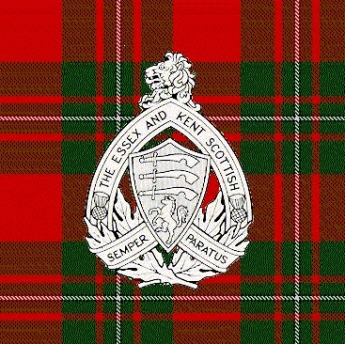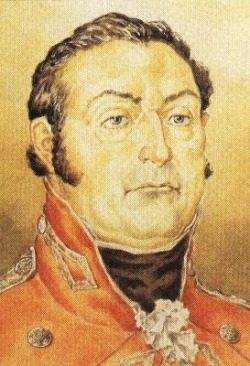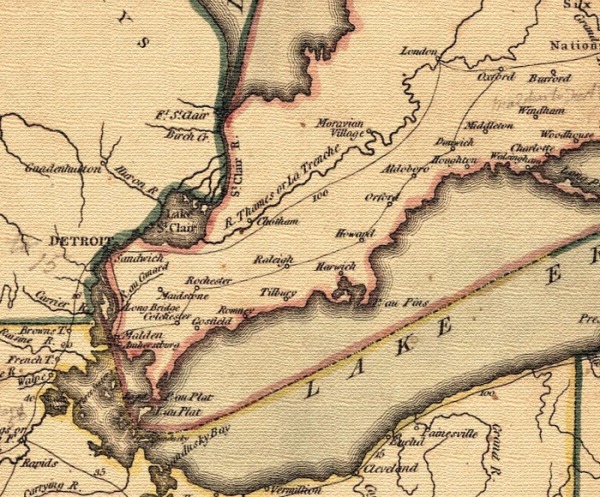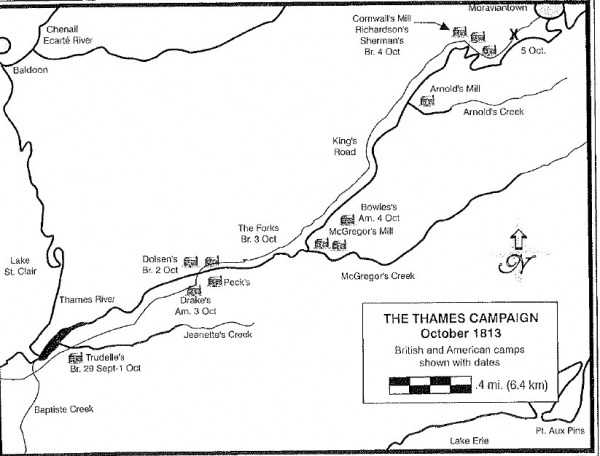CHATHAM-KENT AND THE WAR OF 1812
Some are not aware, but Chatham-Kent was an extremely important location during the War of 1812, possibly the most important location thoughout the first half of the war, though others might point to the Essex or Niagara regions.
THE KENT MILITIA

The Kent Militia may have not been the largest militia force in Canada, or even the area, for that matter, but they played a very important role in the war.
At the beginning of the war they were not properly trained or supplied. Nonetheless, they were immediately dispatched to the Sandwich frontier to serve alongside the Essex militia and the few regulars the area was provided with. Many of the militiamen and settlers of Kent suffered great losses due to the merciless pillaging of the American troops.
The Kent militia was involved in the capture of Fort Detroit and many of the men received large sums of money as prizes from this encounter. Isaac Brock appointed men from the Kent militia (and Essex) to the honourary guard of the fort.
The Kent militia was not only involved in the capture of Fort Detroit, but they were involved in an encounter of some sort during the River Raisin, played an active role in the battle at Queenston Heights, and proved effective in service at Lundy's Lane. They were also participated in various actions in the vicinities of Michigan and Ohio, such at battle at Fort Meigs and Procter's defeat at Sandusky. The Kent Volunteers were involved in the skirmish at McCrae's house and members of Captain John Dolsen's Rifles participated at the Thames River battle, though not in formal units as many of the militia remained on their farms due to American occupation of the area.
PROCTER'S RETREAT

Chatham-Kent is an area known for the defeat of the British during the war, and this makes it a very special and important area because of what was lost there and because it was one of the few battles undisputed to have been won by the U.S.A. Procter became known for what appeared to be cowardice and was court-martialed for his actions in the area after the conclusion of the war.
After the defeat of the British at the battle at Put-In-Bay, they were left with no squadron on Lake Erie. The British could no longer transport supplies and no longer had the necessary back-up needed to protect the land. The decision was made to set Fort Amherstburg alight and begin the retreat along the Thames river.
In his book "For Honour's Sake: The war of 1812 and the Brokering of an Uneasy Peace", Mark Zuehlke describes the retreat: "The morning of September 27 the retreat began in earnest. It was a miserable day. A continual, heavy rain soaked everyone. The downpour combined with the heavy advance of wagons, people, and animals churned up the narrow track, so that the farther back in the line one was, the harder the going. Wagon and cart wheels sunk to the axles and had to be wrestled free. The dresses of the women were sopping with mud as they struggled through knee-deep bogs. Men cursed and swore and pulled and shoved, sweating and shivering at the same time."(p26).
The retreat lasted for ten days, the British and warriors camping along the way while being chased by about 3,000 American troops. Along the way they burned boats in the river to avoid their capture by the Americans, as they could not continue with them up the river.
The British finally made it to the missionary town of Fairfield run by the Moravians. It is there they would make their stand against the advancing American troops.


